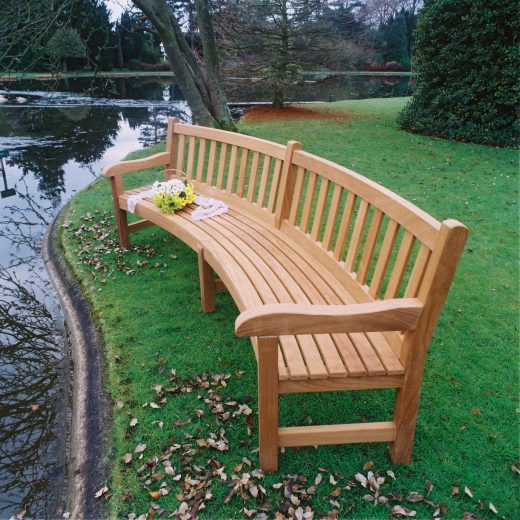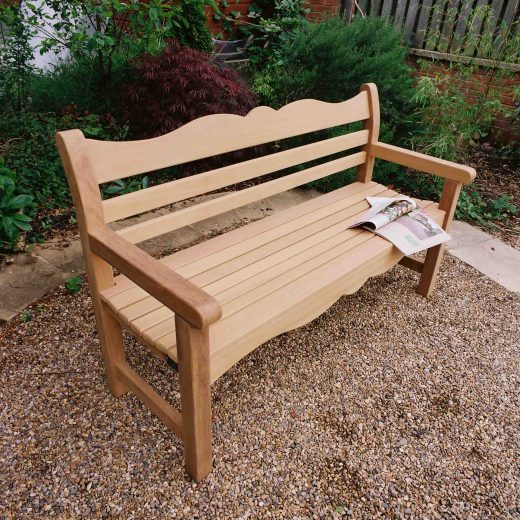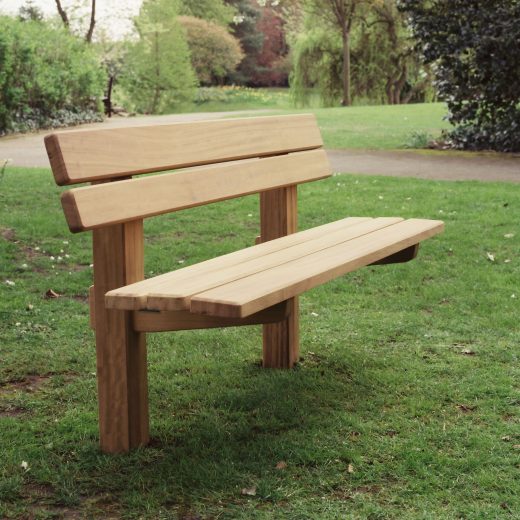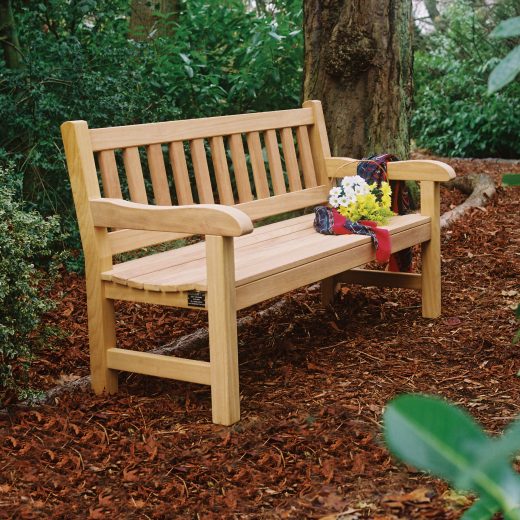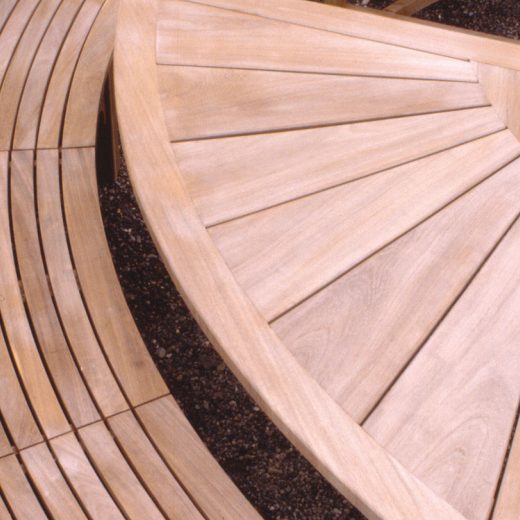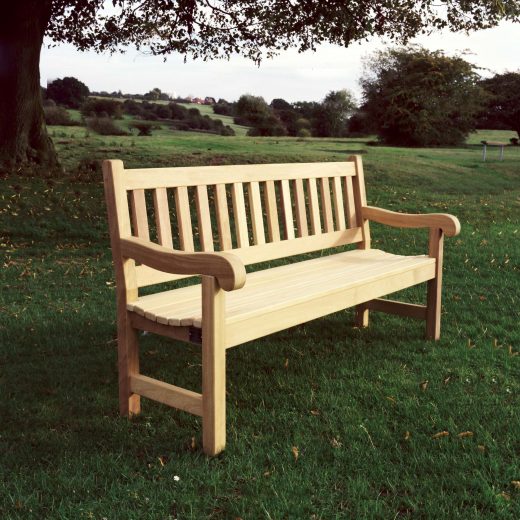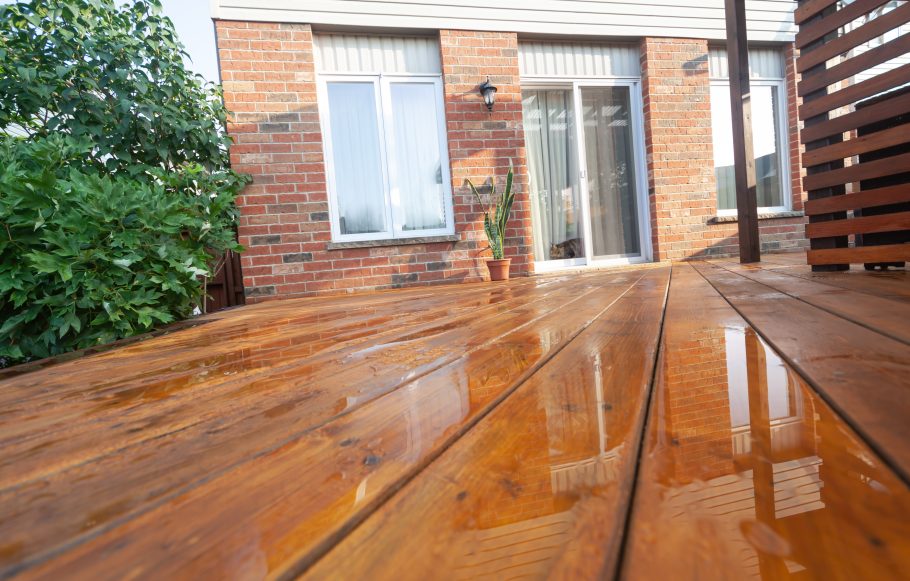
How do I protect my garden furniture from the weather?
Posted on October 11, 2022
We look at 10 options available to protect wooden garden furniture from the effects of weathering.
With the onset of Autumn and Winter soon approaching the number one question we get asked by our customers is how to protect their garden bench or patio table from the elements this winter.
We explore some of the pros and cons of established methods to preserve your wooden garden furniture. Some are indeed quite useful, while others should never be considered.
- Wood stain
- Linseed Oil
- Teak Oil
- Wood Preserver
- Varnish
- Paint
- Wood Restorer
- Cover your furniture
- Powder Coated furniture
- Moveable furniture
1. Should I use wood stain on garden furniture?
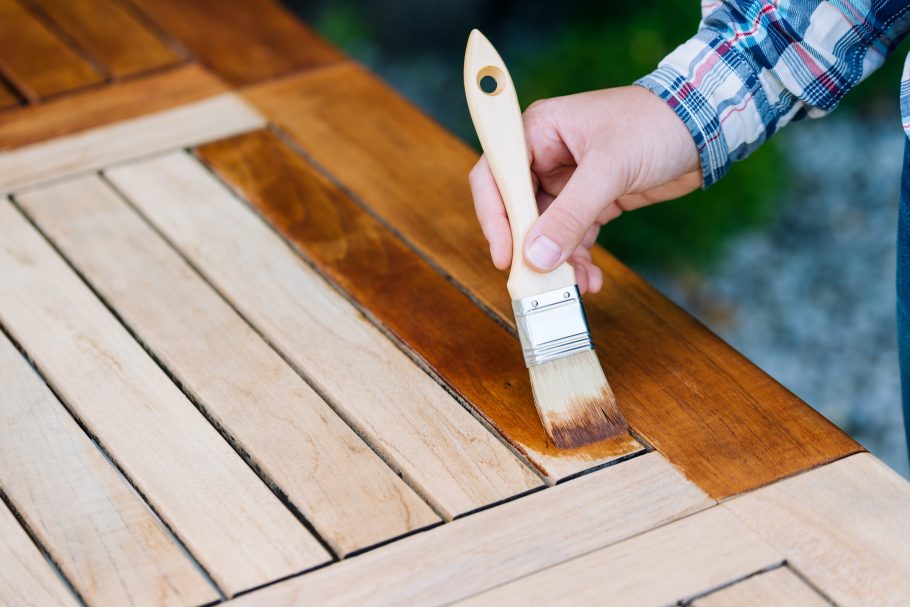
Wood stain varies in texture and transparency, from a completely opaque paint to a fully transparent solution with no pigment at all. If the condition of your bench is relatively new then we would recommend only a very light transparent stain that goes no further than accentuating the wood grain. This however would offer very little resistance to the effects of the weather on your garden bench apart from hiding the silvering effects of the sun. Alternatively, if the condition of your bench is very much showing it's age with plenty of bumps and blemishes, while it will not restore it's former glory, a more robust opaque stain could be applied to give the bench a new lease of life. Coloured or stained finishes do not typically penetrate the deep pores of the wood and may disappear when the finish deteriorates or is removed.
Woodstain pros and cons
Pros
A light wood stain accentuates the original natural beauty of a wooden bench or table. An older bench in poor condition can benefit from a more robust stain.
Cons
A wood stain in it's truest sense will offer little protection unless it has been combined with protectors by the manufacturer. There are a lot of stains for wood, some are more suitable for wooden fences and decking than garden benches and chairs.
2. Should I use linseed oil to preserve or restore wooden furniture?
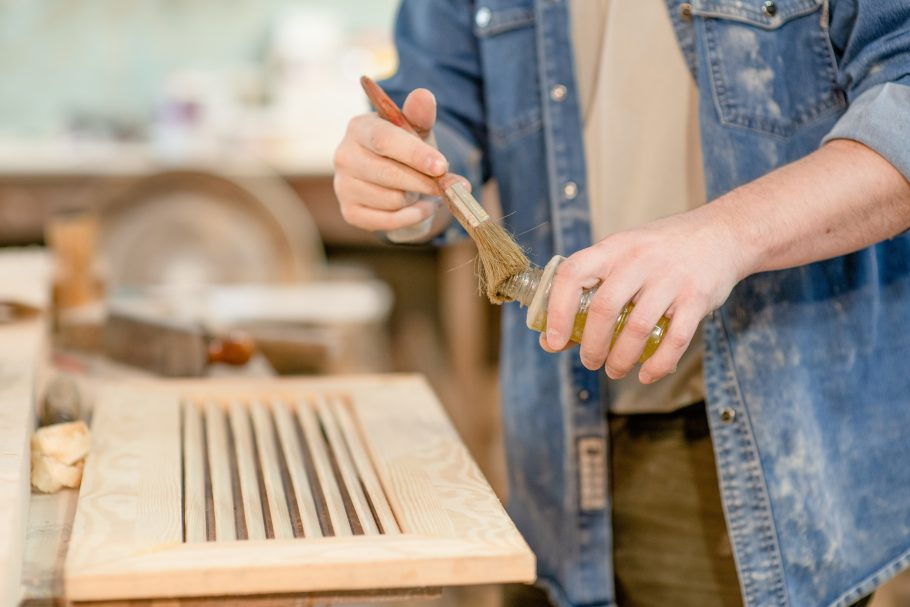
While the prospect of linseed oil can conjure up a romantic notion of lazy summer months and leather upon willow, using it as a wood finish these days isn't recommended. It is easily scratched and water penetrates through the layer in a short space of time causing mildew. It also leaves a yellowish tone to the wood which darkens with age. Even though finished linseed oil feels dry to the touch, studies show that it never fully cures.
The fatty-acid structure of linseed oil also has problems cross-linking and oxidizing, frequently turning the wood black and as such is no longer encouraged to recondition and regenerate wood finishes because of the cross-linking oxidization that occurs.
As a restorer, linseed oil does have the ability to bring back to life the woods natural charm but ultimately there are better products on the market.
Linseed oil pros and cons
Pros
It can act as a good restorer to old wooden furniture if only briefly.
Cons
It doesn't protect against weather that well, scratches easily and darkens the wood over time.
3. Should I use teak oil?
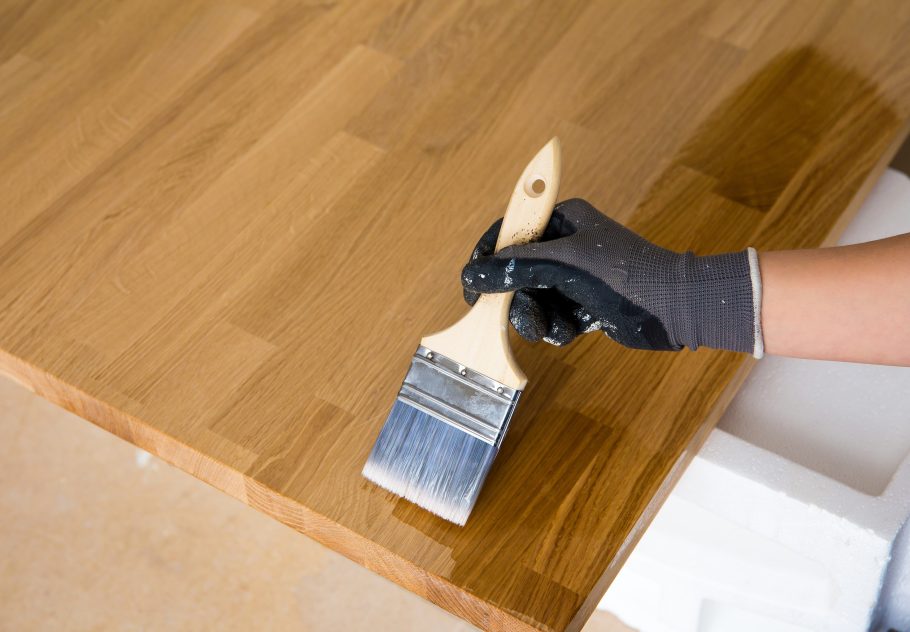
Teak oil is a blend of natural oils used to protect, rejuvenate and nourish hard, oily or exotic woods. Teak Oil brings out the grain of the wood, and protects it against UV rays and water marks. Ideal for use on hard woods and garden furniture, and great for refreshing wood that has become dry from exposure to sunlight.
Generally speaking a good teak oil is preferable to linseed oil as the choice of oils in the blend will have less chance of oxidation and darkening of the wood and will also act as a barrier against excess water preventing mildew. Care should be taken, however, as some results may be unexpected to test in an inconspicuous area first.
Teak oil pros and cons
Pros
A good quality teak oil brings out the best in the natural qualities of the grain in the wood.
Cons
Needs to be applied annually to keep up the finish. Results can be unexpected depending on the type and grain of your wood.
4. Should I use a wood preserver or protector?
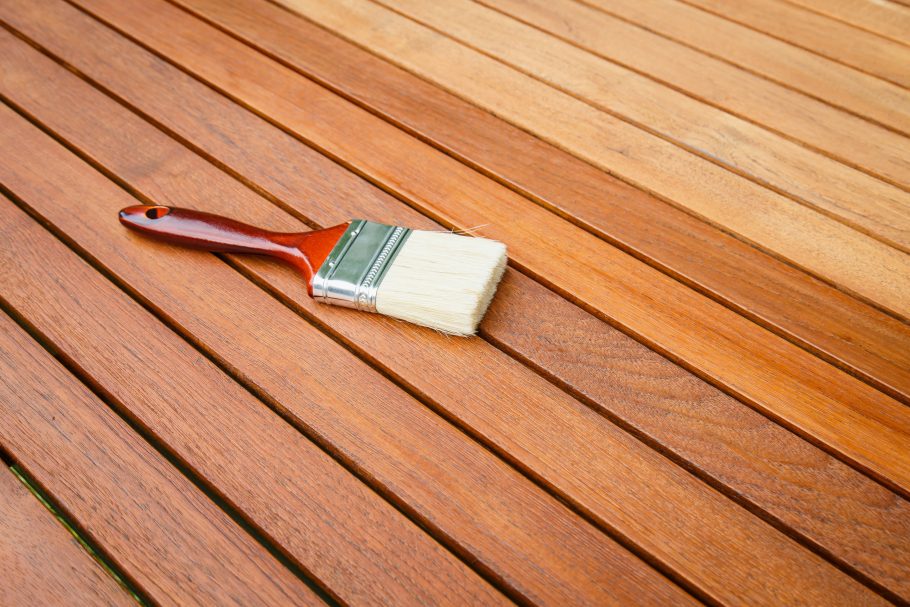
There are many types of wood preserver on the market today. The ones you should look out for are non-toxic, free of pesticides, insecticides and fungicides and therefore pet-safe. Some preservers act as a UV filter in a similar
way to suntan lotion and blocks against harmful UV rays which means your wooden bench our outdoor table will stay looking new for longer.
Wood preserver pros and cons
Pros
Protects against UV ageing / silvering of the wood, washable, probably the most natural looking option of all the wood based applications, should be non toxic / pet safe. Easy to apply.
Cons
There are many on the market today, some are cheap and will not act as a good wood preserver. Even with a good quality preserver, you will need to reapply every year if your wooden garden furniture receive lots of direct sunlight. Does not protect against excess damp / water so be careful in winter. A good quality one will set you back around £35 for a one litre tin.
5. Should I varnish my garden bench?
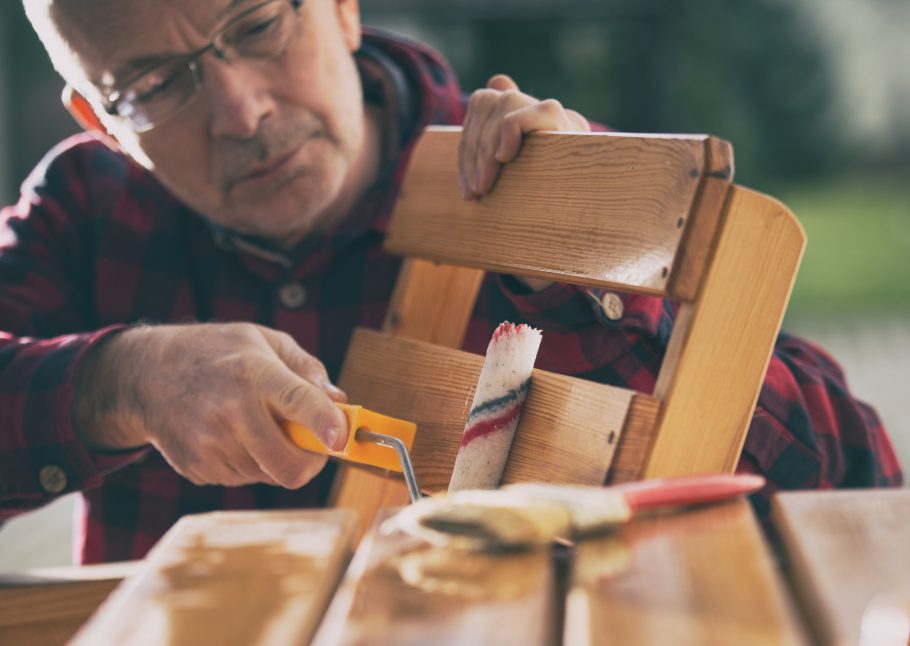
Wood varnish offers great protection from ultra violet rays and dampness alike. It seals the wood pores and prevents penetration of moisture. While the coat would require touching up every year, if used in conjunction with an epoxy sealer, the overall finish and can last for quite a few years.
While the protection offered by varnish is incredibly durable it does also create the least natural of finishes which may be undesirable and is also the most permanent.
If you want to remove a layer of varnish then you either have to sand the bench thoroughly, or use appropriate thinners, paint removers and chemical agents which can harm the bench in the process.
Wood varnish pros and cons
Pros
Very durable, can protect wood for years
Cons
Leaves an unnatural finish, is hard to remove
6. Should I paint my garden furniture?
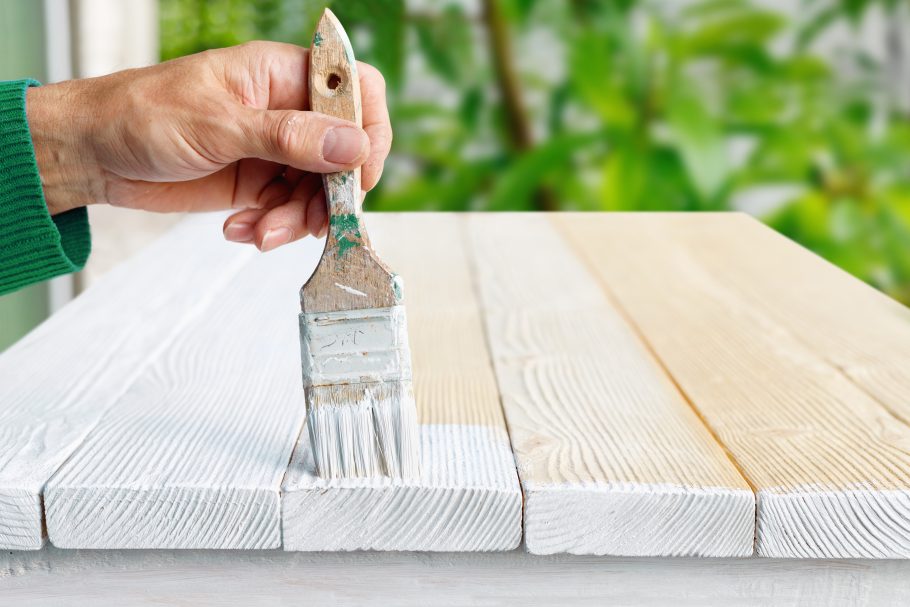
Gone are the days when exterior wood paint came in various shades of brown or green, these days you can search out almost as many funky colours as you can for interior paint. Painting your garden bench can enliven a particular corner of your garden or patio and while we wouldn't recommend it's use on a brand new piece of quality garden furniture, it can certainly enrich an old unloved bench in a poor condition.
Be careful though, if you change your mind at any point and wish to remove the paint then that would be almost impossible. While you certainly could try paint removers, the chances are you will still be left stuck with the paint colour to a certain degree. So not a decision to be taken lightly.
Wood paint pros and cons
Pros
Very durable, can protect wood for years, many different colours to try
Cons
It's a permanent solution and you will be stuck with it.
7. Should I use a wood restorer on a garden table or bench?
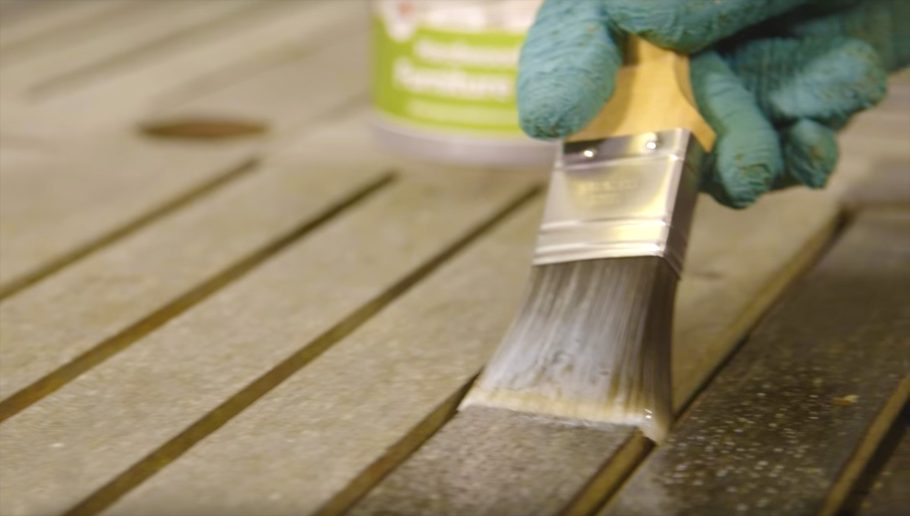
Wood restorer acts as to remove ingrained dirt and old layers of any previous applications and helps to restore the wood to it's former beauty. A really good quality wood restorer need not be abrasive either and once it's had time to dislodge unwanted surface layers it can easily be removed with a stiff brush.
Wood restorer pros and cons
Pros
Rejuvenates wood in poor condition by removing layers of grime and old ingrained debris.
Cons
Cannot be used on it's own to protect wooden garden furniture from the elements but should be used in conjunction with other protectors or finishing oils.
8. What are the advantages of a garden furniture cover?
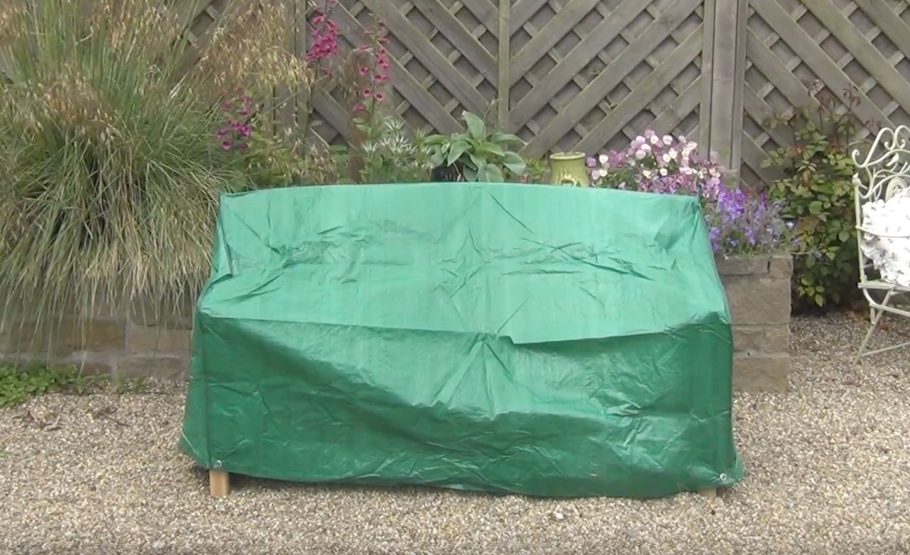
A bench cover is a great idea and also the least hassle. Made out of a range of materials including the standard laminated polythene, it acts as a waterproof barrier against the harshest winters. It also means that if you don't mind the natural silvering of your wooden bench produced by the sun's rays, then you do not have to use any oils, varnishes or protectors.
If considering a wooden bench cover then you should also ensure that your bench is situated in an area of good drainage so that you can protect against the bench legs coming into contact with puddles. Also if you have a custom made bench then a standard bench cover may not fit well and you may have to resort to making your own.
Bench cover pros and cons
Pros
You can leave your bench in situ during harsh winters, acts as a weather barrier without having to apply any treatments to your bench.
Cons
Does not protect against rising moisture or protect bench legs that may come into contact with water. Can damage bench if left on over summer months. They don't always look great. Might not fit that well.
9. What are the benefits of powder coating a garden bench?
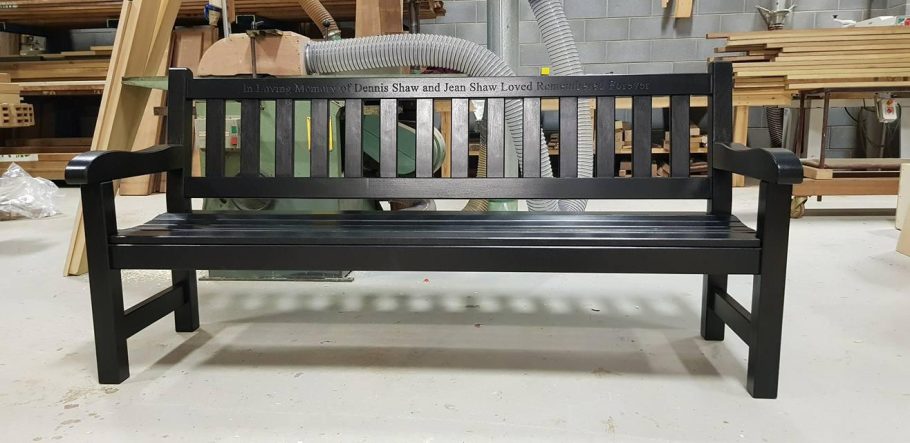
Powder coated garden furniture provides a resilience to the weathering of wood like no other solution. It is non porous so the sun cannot penetrate the coating and neither can moisture. As the coating is professionally sprayed on, it creates an even finish across all areas and there are many different colours to choose from.
Powder coating garden furniture is the most expensive of all solutions as it is something that cannot easily be done at home. The most likely solution is to seek out your local specialist who can do the job for you.
We have produced a number of powder coated garden benches usually for big projects but also for the domestic market and is something we do as part of the manufacture of the bench.
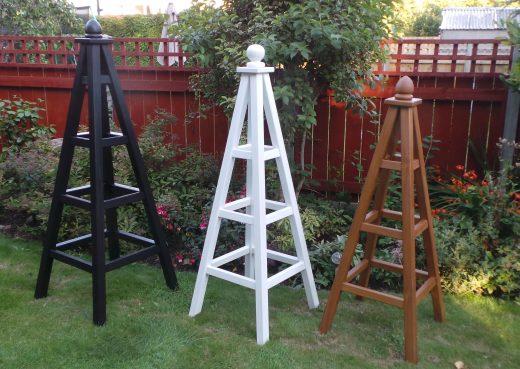

Powder coated garden furniture pros and cons
Pros
It produces an even, durable and professional finish. There are many vibrant colours to choose from.
Cons
It can be an expensive process and is the most permanent options of all.
10. Benefits of moveable furniture.

We have created a few pieces of moveable furniture over the years. They are a great solution for people with excess space in garages or out-houses where the garden bench can be safely stored throughout the winter months away from the rain and snow. The bench usually consists of two wheels where the feet would be and two handles on the opposite side. This way the bench can be lifted at one end and moved in a similar fashion to moving a wheelbarrow.
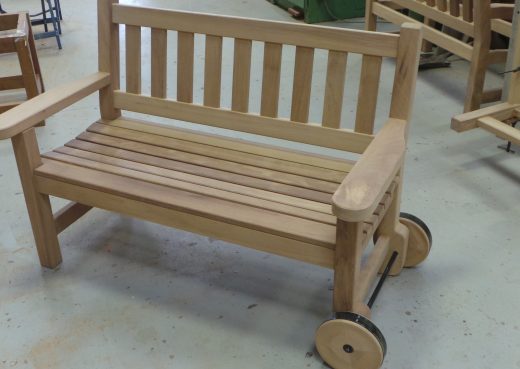
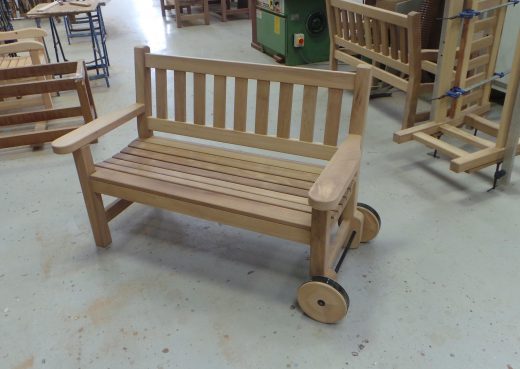
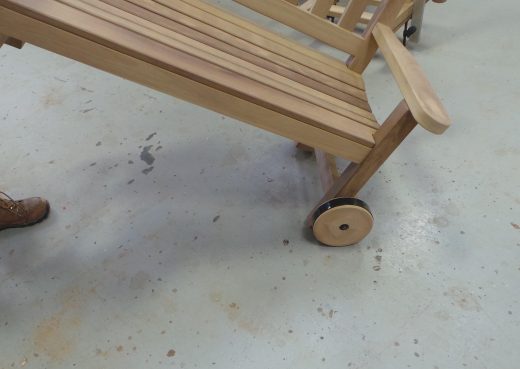
Moveable garden furniture pros and cons
Pros
It can be safely stored away from the elements altogether. Doesn't require any other application of protection.
Cons
It can look a little excentric. You need space somewhere undercover to store it during the winter months.
What would happen if I were to do nothing at all to protect my garden furniture?
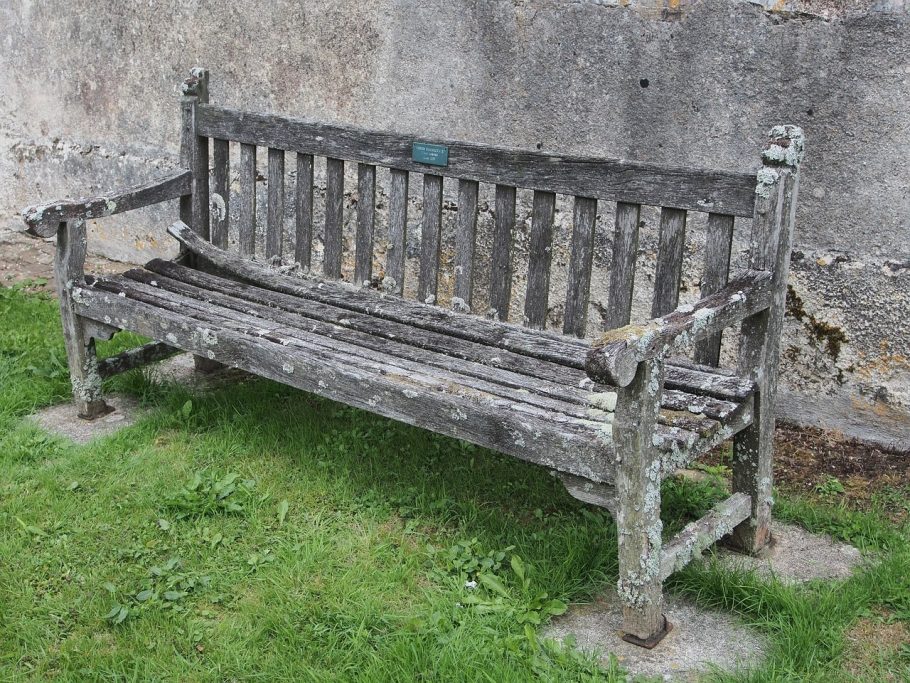
If left untreated your garden bench or wooden patio table will eventually succumb to the elements of the weather. The sun's rays will very quickly change the colour of the wood from deep tones to paler washed out colours known as silvering. While teak and iroko benches generally withstand damp and wet conditions better than other wood, eventually water will penetrate joints and cracks. Those areas will begin to break down allowing rot or algae to form. Moss and fungus can also take their toll on the bench and eventually the wood will decay.
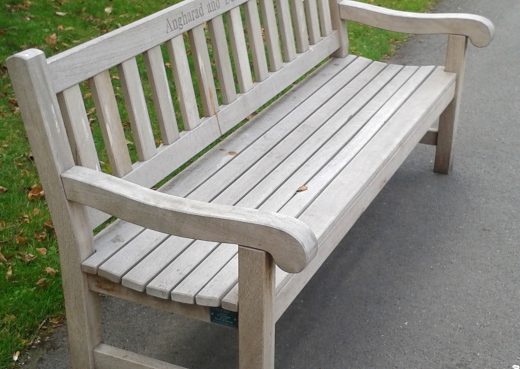
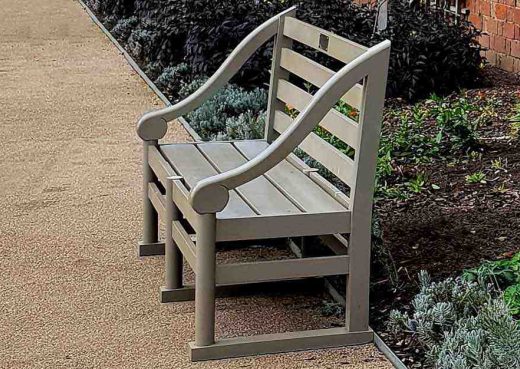
A lot of people, including ourselves prefer the natural silvering of the wood to come through as the garden bench ages. We think that the maturity of a quality garden bench ages like a fine wine and as such we prefer to tamper with it as little as possible.
Click on the pictures to enlarge
To ensure longevity of a good quality garden bench we prefer to use a restorer and protector once a year. This non destructive process will clean away bacteria and other adversaries, restore the natural colour of the wood and also protect from the harshest of the sun's rays. Most importantly the applications will fade away to reveal the bench in all it's untampered with glory for years to come.
